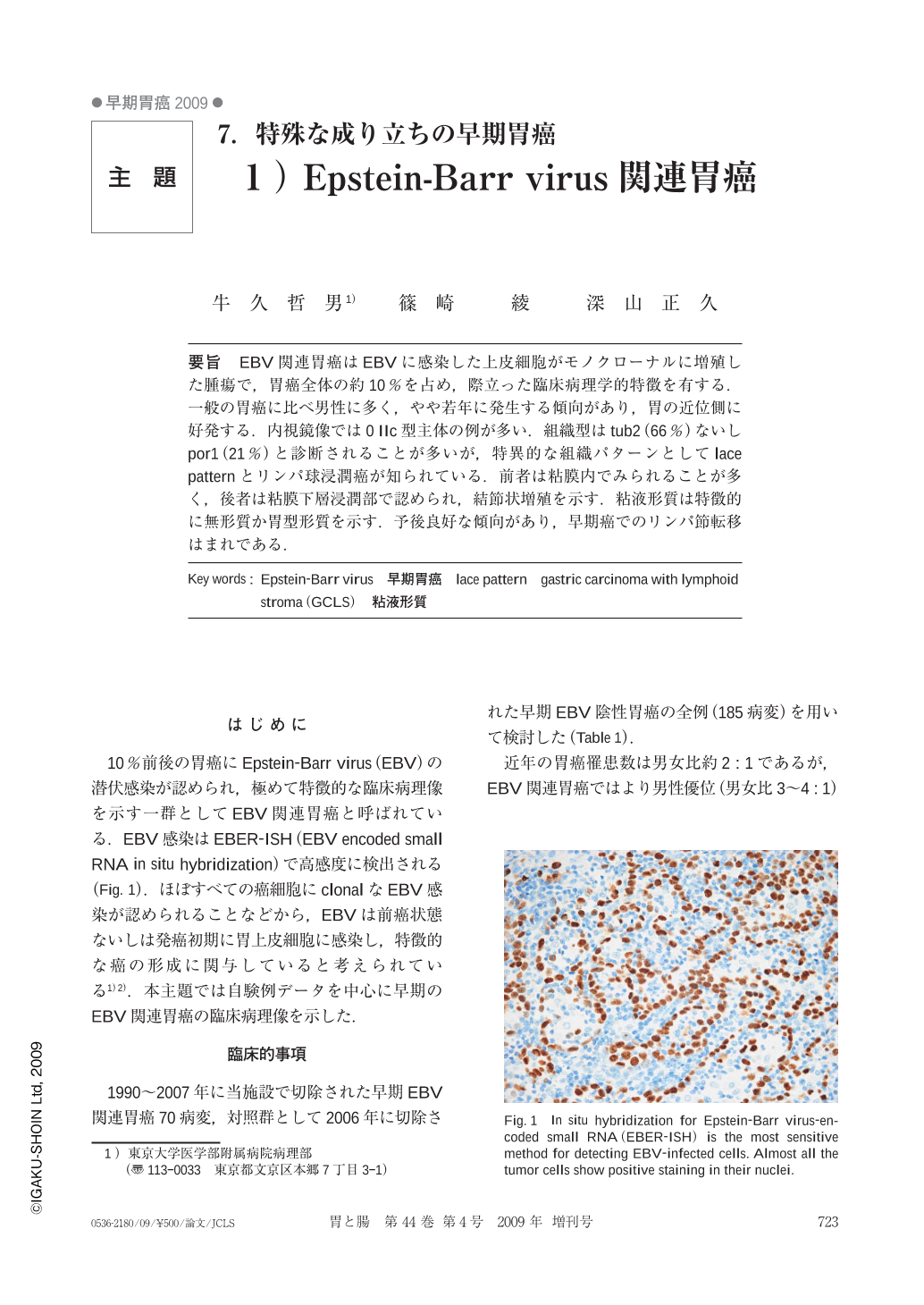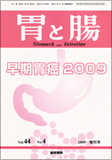Japanese
English
- 有料閲覧
- Abstract 文献概要
- 1ページ目 Look Inside
- 参考文献 Reference
- サイト内被引用 Cited by
要旨 EBV関連胃癌はEBVに感染した上皮細胞がモノクローナルに増殖した腫瘍で,胃癌全体の約10%を占め,際立った臨床病理学的特徴を有する.一般の胃癌に比べ男性に多く,やや若年に発生する傾向があり,胃の近位側に好発する.内視鏡像では0 IIc型主体の例が多い.組織型はtub2(66%)ないしpor1(21%)と診断されることが多いが,特異的な組織パターンとしてlace patternとリンパ球浸潤癌が知られている.前者は粘膜内でみられることが多く,後者は粘膜下層浸潤部で認められ,結節状増殖を示す.粘液形質は特徴的に無形質か胃型形質を示す.予後良好な傾向があり,早期癌でのリンパ節転移はまれである.
Epstein-Barr virus(EBV)-associated gastric carcinoma(GC)is a distinct subgroup of GC, comprising 10% of all cases of GC. It develops as a consequence of monoclonal growth of EBV-infected epithelial cells, which is demonstrated by in situ hybridization for EBV-encoded small RNA(EBER-ISH). Clinical features of EBV-associated GC include male predominance, relatively younger age, preponderant location in the proximal stomach, and superficial depressed appearance in endoscopy. Histologically, EBV-associated GCs are classified mainly into tub2(66%)or por1(21%), and they frequently display two unique histologic patterns. One is lace pattern showing irregularly anastomosing cord-like or tubular structures in the mucosal layer. The other is gastric carcinoma with lymphoid stroma which is often observed as a submucosal nodule. Most EBV-associated GCs show a null or gastric phenotype according to the expression pattern of mucin molecules(MUC5AC, MUC6, and MUC2)and CD10. EBV-associated GC shows a less frequent lymph-node involvement and a relatively favorable prognosis compared with EBV-negative GC.

Copyright © 2009, Igaku-Shoin Ltd. All rights reserved.


